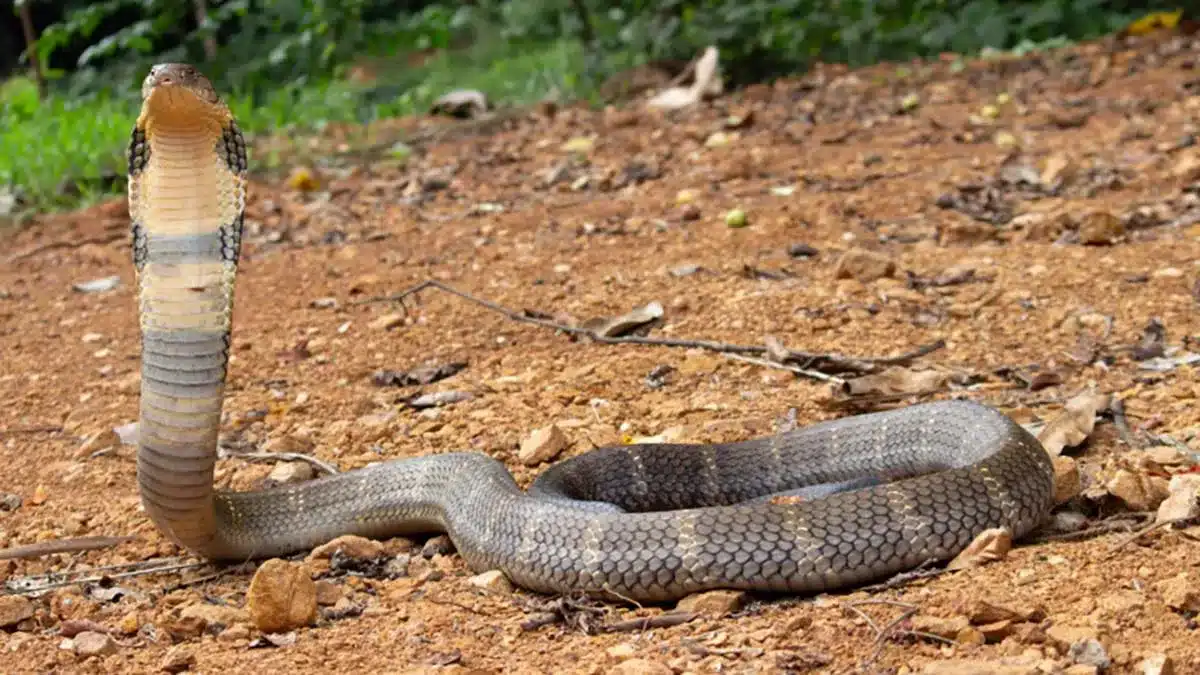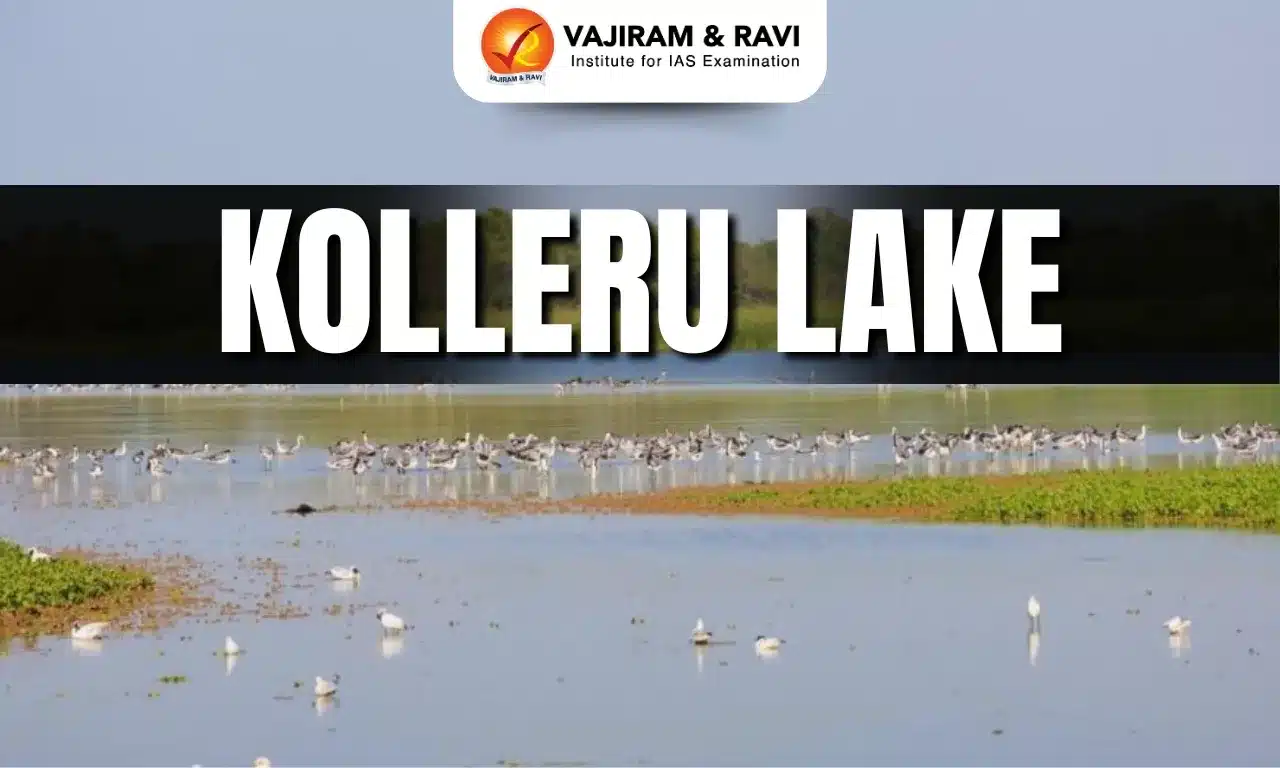About King Cobra:
- It is the world’s largest venomous snake and an active hunter.
- The main feature that distinguishes the king cobra from other cobras is the possession of 11 large scales on the crown of its head.
- It preys almost exclusively on other snakes, prowling in forests, fields, and villages in the daytime as well as at night.
- It was in 1836 that a broad spectrum of king cobra species was named as Ophiophagus hannah by Danish naturalist, Theodore Edward Cantor.
- The amount of venom that they can deliver in a single bite is enough to kill 10 people or even an elephant.
- The neurotoxin venom of king cobra affects the respiratory centres, causing respiratory arrest and cardiac failure.
- The king cobras are the only snakes in the world to build nests that are 4 ftx 3 ft and the female king cobras are found ferociously guarding them.
- The study identified four species of king cobra:
- Ophiophagus kaalinga: Found in the Western Ghats of southwestern India, this species has fewer than 40 bands on its body.
- Ophiophagus hannah: Inhabiting northern and eastern India, the Andaman Islands, eastern Pakistan, Indo-Burma, Indo-China, and Thailand, this species displays 50 to 70 bands.
- Ophiophagus bungarus: Found in the Malay Peninsula, Greater Sunda Islands, and parts of southern Philippines, it features more than 70 bands.
- Ophiophagus salvatana: Native to Luzon in the northern Philippines, this species lacks bands altogether.
- Conservation status
- IUCN: Vulnerable
- CITES: Appendix II
- Threats: Their survival is threatened by habitat destruction and exploitation for their skin, food, medicine, and the pet trade.
Q1: What is Snakebite Envenoming?
Snakebite Envenoming is a life-threatening medical condition caused by venomous snake bites. It is a major health concern in rural and snake-endemic regions. It poses a risk to vulnerable populations, including agricultural workers, children, and those living in tropical and subtropical areas.
News:‘Kaalinga’ will be the scientific name for ‘Kalinga Sarpa’
Last updated on December, 2025
→ Check out the latest UPSC Syllabus 2026 here.
→ Join Vajiram & Ravi’s Interview Guidance Programme for expert help to crack your final UPSC stage.
→ UPSC Mains Result 2025 is now out.
→ UPSC Notification 2026 is scheduled to be released on January 14, 2026.
→ UPSC Calendar 2026 is released on 15th May, 2025.
→ UPSC Prelims 2026 will be conducted on 24th May, 2026 & UPSC Mains 2026 will be conducted on 21st August 2026.
→ The UPSC Selection Process is of 3 stages-Prelims, Mains and Interview.
→ UPSC Result 2024 is released with latest UPSC Marksheet 2024. Check Now!
→ UPSC Toppers List 2024 is released now. Shakti Dubey is UPSC AIR 1 2024 Topper.
→ Also check Best IAS Coaching in Delhi

















